Read the full OC&C Global 50 Report here
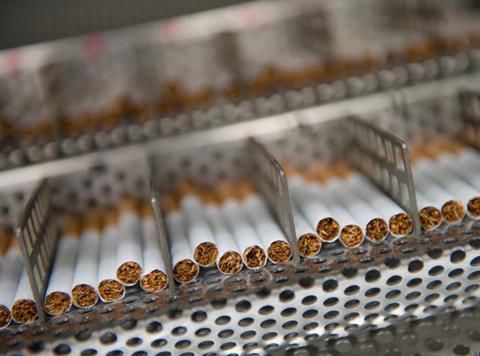
It comes as little surprise that tobacco is the again the standout performer in the fmcg universe, matching its sky-high margins with strong revenue growth in the past 12 months.
Weighted average sales growth of the Global 50’s tobacco players was 4.9% against the 0.7% overall decline, while EBIT growth was 1.8%pts compared to 0.5%ppts for the whole sector.
One of the enduring features of the fmcg sector is how tobacco continues to churn out massive investor returns – and sales growth in four of the six Global 50 cigarette makers – despite an ever-tightening regulatory environment and collapsing volumes in their traditional markets.
The volume of cigarettes shipped continues to fall year-on-year, falling 2.5% from 3.47 billion units in 2013 down to 3.21 billion last year.
“There are pockets of growth in the Middle East, Asia and Africa, but overall cigarette volumes are down everywhere,” says Moody’s tobacco analyst Ernesto Bisagno. “The key to the tobacco industry’s performance is that declining volume has been more than offset by pricing and product mix.”
The focus of the tobacco firms has shifted from pursuing volume growth in emerging markets back to developed markets with more attractive pricing dynamics.
Moody’s senior analyst Ernesto Bisagno adds that tobacco uniquely enjoys low elasticity products – due to the addictiveness of nicotine – and the regular duty increases give the platform for tobacco companies to push through price rises.
However, OC&C’s Will Hayllar things there are lessons the wider industry can learn from tobacco’s successful navigation of falling volumes and tightening regulation.
“It does show that if you’ve got a structure volume decline, then the best way of thinking about your top line is to look at pricing and premiumising products,” he says, pointing to the alcoholic drinks makers as suppliers trying to drive customers up the revenue curve.
Both Philip Morris and British American Tobacco increased their share of revenue from EU countries by 3.2 percentage points and 1.2ppts respectively as they push higher-priced products.
For Philip Morris EU sales now make up 35.8% of sales compared to 31.6% in 2014, while EMEA sales have slipped from 33.5% to 27.1%.
While tax increases have supported this trend, active portfolio premiumisation has also driven higher revenues in the West. Between 2010-16 tobacco players have squeezed through underlying price rises of 9% per annum – a faster rate growth than the 7% taxation increase over that period.
These higher margin products support the tobacco sector’s bulging bottom line, which has also been boosted by their lack of ability to spend cash marketing due to widespread advertising bans.
Selling, general and administrative expenses (SG&A) costs as a percentage of revenues for the sector show continued decline, falling to just 14% at British American Tobacco last year.
The long-standing restrictions on tobacco advertising have been exacerbated by the advent of plain packaging laws and new restrictions on smoking behaviours – such as bans in bars, restaurants and other public places.
As governments increasingly move against high sugar content food and drinks and measures to curb excessive alcohol consumption, tobacco has shown that the hit on marketing spend capabilities can be reinvested into R&D to support the long-term future of the business by funding less health-damaging products.
The tobacco companies have reacted with some urgency in an attempt to avoid being outmanoeuvred by changing consumer trends by investing significant sums in next generation tobacco products. “If that shift is happening anyway you are better off potentially cannibalising your core sales to retain and protect your business in the longer-term,” Hayllar says.
These new products are not as profitable and their traditional cigarette products and it will be some time before they are contributing to the bottom line.
The annual spend of a smoker consumer five packs per week is just over £2,000, while the combined cost for the comparable vaping device, tanks and e-liquids is £554 and at a significantly lower profit margin.
However, the current global electronic cigarette market, which was worth less than $0.5bn in 2009, is estimated to grow from its current level of $8bn to $35bn by just 2021.
Moody’s Bisagno says there is currently little material contribution to the bottom line from these new technologies, but he suggests Philip Morris – which has spent $2.4bn developing its iQos system – could start to see some contribution at the operating level either this or next year.
“Certainly all tobacco companies are thinking about where their business models are going to be in ten or twenty years’ time,” he says. “We think the real game changer will be when new products are developed where the experience is more comparable to traditional smoking.
Another way the tobacco industry has looked to drive value in a structurally declining market is by pulling the M&A lever.
The tobacco sector has undergone far greater consolidation than other areas of the fmcg sector in recent years, with four multi-billion pound deals since July 2014, including the £49.8bn buyout of Reynolds American by British American Tobacco in January 2017.
In particular, the USA has been a focus for international companies like Japan Tobacco and Imperial Brands to build their footprint as the threat of vast litigation claims recedes.
This consolidation trend is likely to continue, with market speculation that PMI is looking to acquire Altria in the near future as well as speculation that British American Tobacco or Japan Tobacco could move for Imperial Brands.
OC&C Global 50 2017: Can zero equal hero?
- 1
- 2
 Currently reading
Currently readingOC&C Global 50: Tobacco's lessons for the fmcg industry
- 3
- 4
- 5
- 6
- 7

















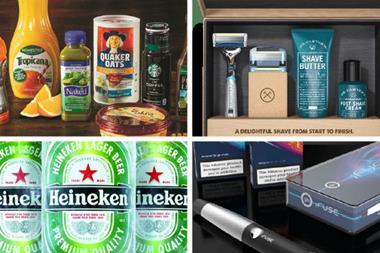
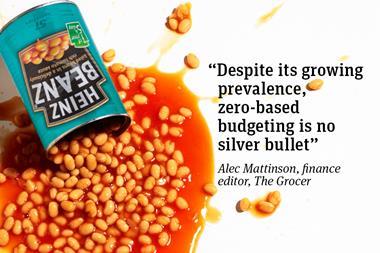
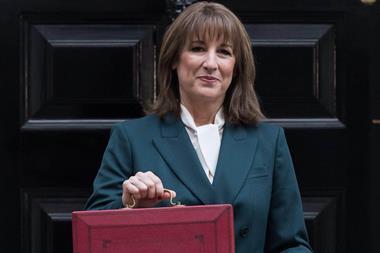

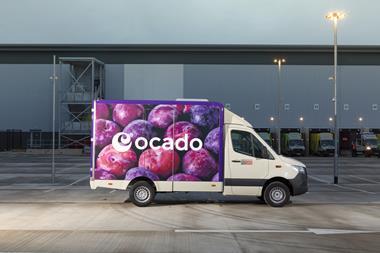



No comments yet